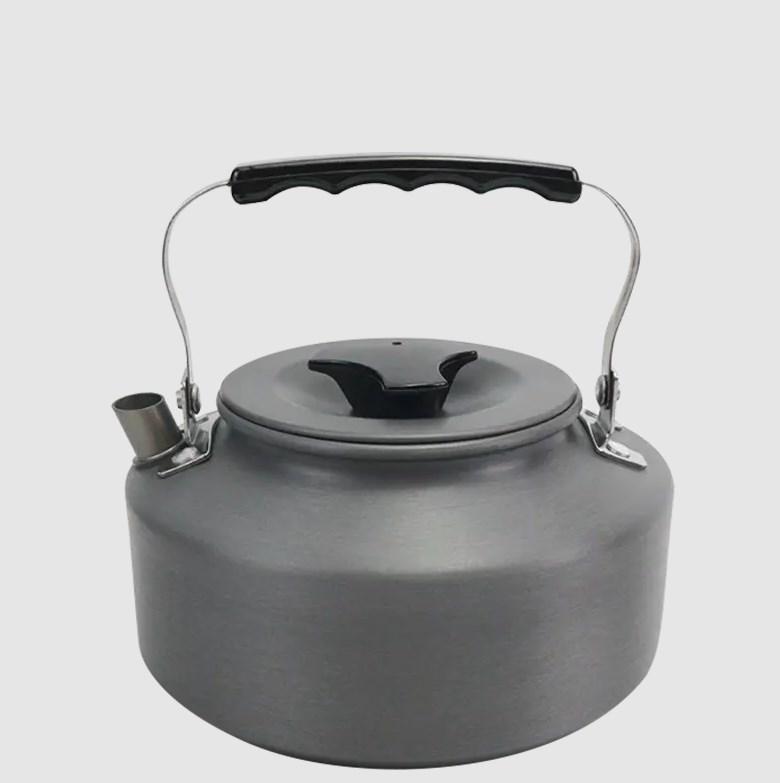Assessing the Long-Term Corrosion Resistance of Camp Hot Water Pot in Outdoor Environments

When it comes to camping equipment, durability and safety are two of the most important considerations, especially for gear that comes into direct contact with food and water. Among these, the Camp Hot Water Pot is an essential item for boiling water, cooking, or making hot beverages in outdoor settings. As it is frequently exposed to heat, moisture, and a wide range of environmental conditions, one of the most common concerns is its corrosion resistance. Understanding how well a Camp Hot Water Pot performs in terms of corrosion protection is crucial for both the health and longevity of the product.
Corrosion occurs when metal reacts with moisture, oxygen, or chemicals to form rust or other forms of degradation. For a Camp Hot Water Pot, this is a significant issue because it is often used in rugged conditions where it's regularly filled with hot liquids, placed over open flames, or stored in humid or wet environments. If the material isn't properly resistant to corrosion, not only will the pot deteriorate quickly, but there could also be safety risks from rust contamination in drinking water or food.
Fortunately, most well-designed Camp Hot Water Pots are constructed from stainless steel, a material known for its excellent corrosion resistance. Specifically, 304 stainless steel is commonly used because it contains chromium and nickel, which form a passive oxide layer on the surface that resists rust. This type of stainless steel is food-grade and offers a great balance between cost and corrosion resistance. In harsher conditions, such as exposure to salty air or highly acidic contents, 316 stainless steel, which contains added molybdenum for improved corrosion resistance, may be used in premium models.
Aluminum is another material sometimes used for hot water pots due to its lightweight properties, which are ideal for camping. However, bare aluminum corrodes relatively easily when exposed to acidic or salty substances. To counter this, manufacturers often use anodized aluminum for Camp Hot Water Pots, which provides a protective oxide coating. While anodized aluminum can resist corrosion effectively, this coating can wear off over time, especially with abrasive cleaning or repeated heating, potentially exposing the base metal to deterioration.
The design features of a Camp Hot Water Pot also influence its corrosion resistance. For example, pots with seamless or precision-welded construction reduce the chances of moisture getting trapped in joints or seams, which are common sites for corrosion to begin. Lids, spouts, and handles must also be made from compatible and durable materials, as dissimilar metals can lead to galvanic corrosion when in contact with each other in the presence of moisture.
Maintenance practices play a crucial role in preserving the pot’s corrosion resistance. Users should always clean the pot thoroughly after use, dry it completely, and store it in a dry, ventilated space. Avoiding prolonged contact with acidic substances like lemon water or tomato-based liquids will also help extend the life of the protective coatings or stainless surface.
In conclusion, a high-quality Camp Hot Water Pot offers solid corrosion resistance when made from materials like 304 or 316 stainless steel or well-anodized aluminum. Its ability to withstand rust and degradation makes it a reliable choice for repeated outdoor use. By selecting a pot made from corrosion-resistant materials and maintaining it properly, campers can ensure safe, long-lasting use in even the most demanding environments. This level of performance not only supports a better outdoor experience but also protects the user’s health and investment.
- Art
- Causes
- Crafts
- Dance
- Drinks
- Film
- Fitness
- Food
- Giochi
- Gardening
- Health
- Home
- Literature
- Musica
- Networking
- Altre informazioni
- Party
- Religion
- Shopping
- Sports
- Theater
- Wellness


